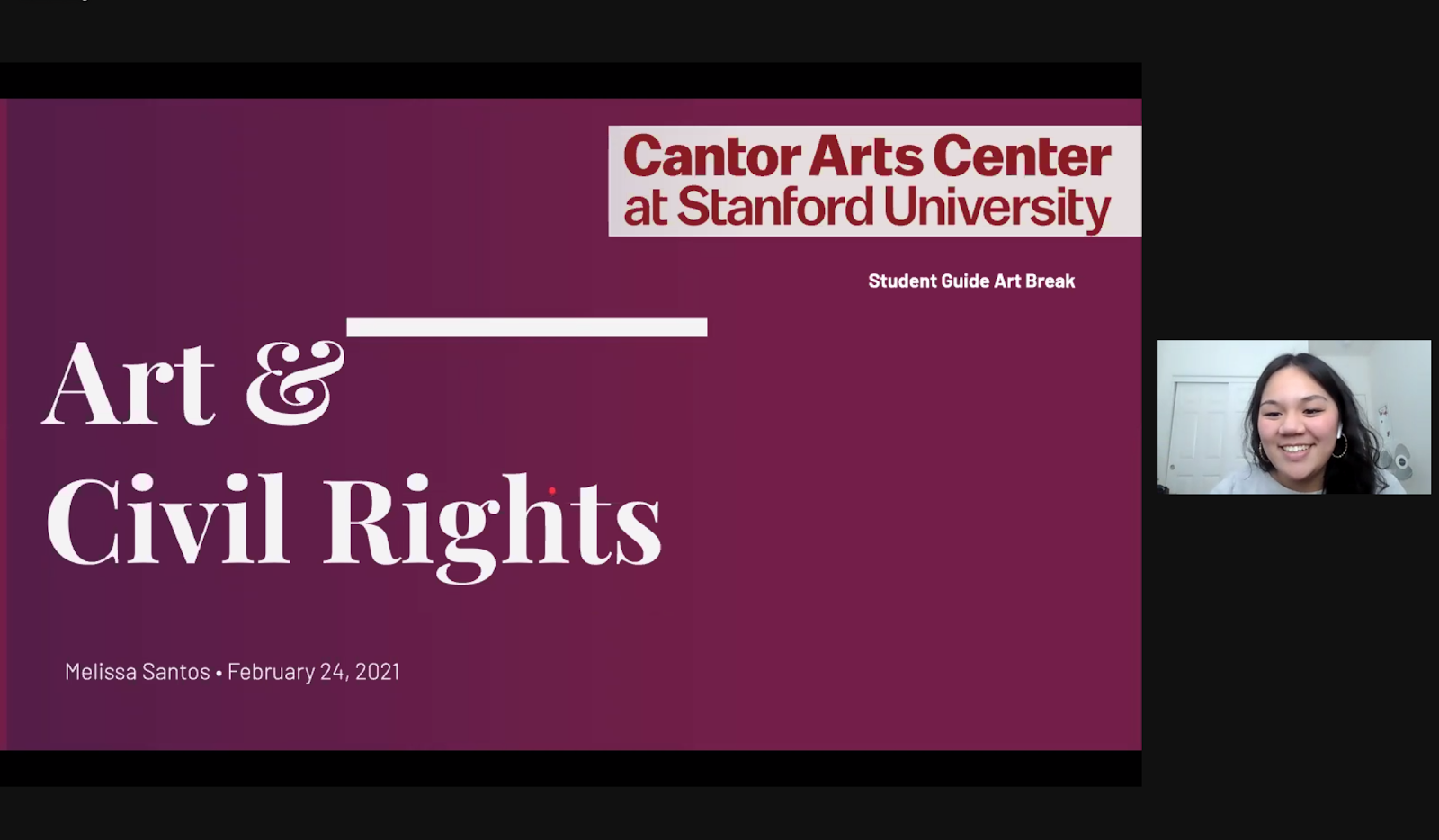On Wednesday, the Cantor Arts Center hosted the “Art & Civil Rights” installment of Art Breaks, a series of events run by Stanford student tour guides from the Cantor and the Anderson, each featuring a discussion about how pieces at Stanford’s museums relate to different disciplines that each student is studying. Art Breaks began in December 2020 and have been held every other Wednesday over the winter quarter.
“Art & Civil Rights” was led by Melissa Santos ’21, who is pursuing a psychology major, Spanish minor and sociology master’s degree at Stanford. Santos is especially interested in studying the intersection of race and gender in education, which informed the pieces she chose to share with the audience. She also wanted the conversation about artwork to pay homage to Black History Month, as well as respond to recent dialogue at Stanford about the departmentalization of African & African American Studies.
Santos began by contrasting two pieces, “The Ordeal of Alice” (1963) painted by Jacob Lawrence, and “The Problem We All Live With” (1964) painted by Norman Rockwell. Both of these paintings depict the experience of Black students in the 1960s after the Brown v. Board of Education case ruled to integrate schools.
“The Ordeal of Alice” depicts a Black girl wearing a white dress and many chains, clutching her school books while being surrounded by “monstrous beings” that seem to be taunting her. “The Problem We All Live With” portrays Ruby Bridges on her way to William Frantz Elementary School in Louisiana. In this painting, Santos found that the most striking difference was the way in which Rockwell chose to portray the girl as “surreally calm in her courage against chaos and hatred.”
For Santos, the choices each artist made in their paintings are impacted by their respective backgrounds. Lawrence was a Black artist whose piece is focused on capturing the “pain and turmoil of a central figure.” In contrast, Santos pointed out that Rockwell was a white artist whose painting, in Santos’s opinion, is missing the portrayal of suffering that Bridge’s family underwent to send her to school.
“Whereas Rockwell’s piece may have served to shame or educate a white audience, Lawrence seems to be drawing our attention directly to the girl and his painting … he wants us to think about her pain and suffering and how it was directly caused by the people around her,” Santos said.
Although these two paintings may seem as though they are from a bygone era, in reality, Santos pointed out that schools today remain incredibly segregated. According to the UCLA Civil Rights Project, Black students in the United States today are just as segregated as they were in the 1960s before desegregation orders were enforced. Even in more integrated schools in the Bay Area, where Stanford is located, there is little contact between students of color and white students due to tracking of students into different academic paths. Santos also connected these trends to higher education in the United States today, where she noted that although many colleges are eager to advertise their diversity, issues of race and class impact the perception of Black and low-income students in higher education. Many of these themes impact Stanford.
Santos is glad to see that at Stanford, to some extent, students of color and first-generation students have community centers and resources. However, she also thinks there is still work that needs to be done, including increased funding for the Martin Luther King Junior Research and Education Institute, as well as additional support for first-generation low-income students during the pandemic.
To close, Santos tied her coursework to the themes of race, oppression and education displayed in the paintings. Drawing from her sociology background, Santos shared that oppression is “baked into” schools’ political as well as financial and economic systems. And from a psychological perspective, she noted that “stereotypes about Black people are just as strong and searing as ever.”
Santos hopes that Stanford students play an active role in Cantor and pay special attention to the different stories the museum exhibits.
“We sometimes don’t question which voices and stories get curated and get placed in a museum context, so I think it’s really important that Stanford students push for Cantor to continue being more inclusive and representative of the stories and voices we want to hear,” Santos said.
Contact Anuka Mohanpuhr at arts ‘at’ stanforddaily.com.
